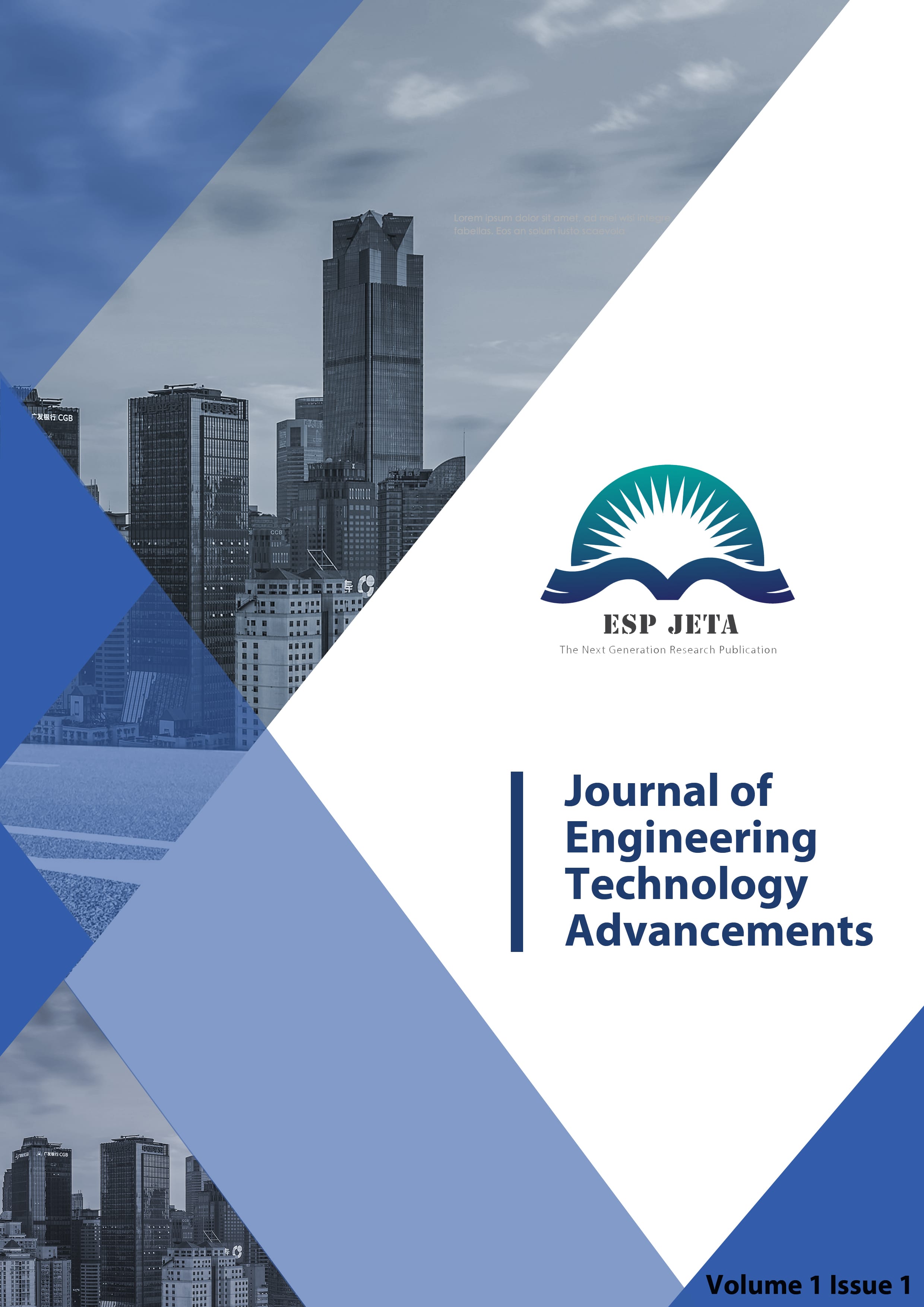Aerodynamic Study of Minibus in Open and Closed Window Scenarios
| ESP Journal of Engineering & Technology Advancements |
| © 2023 by ESP JETA |
| Volume 3 Issue 3 |
| Year of Publication : 2023 |
| Authors : Olusola Oloruntoba, Oluwasanmi Alonge, Ojotu Joseph, Oluranti Abiola |
 :10.56472/25832646/JETA-V3I7P103 :10.56472/25832646/JETA-V3I7P103 |
Citation:
Olusola Oloruntoba, Oluwasanmi Alonge, Ojotu Joseph, Oluranti Abiola, 2023. Aerodynamic Study of Minibus in Open and Closed Window Scenarios, ESP Journal of Engineering & Technology Advancements 3(3): 15-22.
Abstract:
Several vehicles in tropical Africa, such as Nigeria, operate with open window, and this is expected to affect aerodynamics of the vehicles. Based on established theory, Aerodynamic drag is a major component of energy losses which limit the energy available to propel a vehicle. The goal of this study is to determine the effect of open window on the aerodynamics of a typical minibus. ANSYS™ FLUENT™, a Computational Fluid Dynamics program, is applied to conduct numerical study in this work; vehicle speed is taken as 100km/h. Results from this study show that a characteristic chaotic flow in experienced in and around the vehicle with open window, leading to corresponding development of a chaotic turbulent flow on the frontal exterior region adjacent to frontal window, as well as the occurrence of a characteristic horse-shoe shaped flow which is formed on the outside of the wheels. These phenomena die out towards the rear of the vehicle trail. The corresponding characteristic turbulent flow is limited for closed window vehicle. Furthermore, aerodynamic drag and lift coefficients for closed window scenario are determined as 0.5773 and -0.1161 respectively; these values are 10.29% and 56.43% lower than the corresponding values for open window vehicle. The implications of the findings are: (a) higher aerodynamic drag leads to increase energy loss, fuel consumption and CO2 emission, and (b) higher aerodynamic lift leads to reduced tire grip and increased instability, especially at corners.
References:
[1] T. Q. Dinh, Intelligent and Efficient Transport Systems - Design, Modelling, Control and Simulation. 2020. doi: 10.5772/intechopen.81308.
[2] A. Eydgahi and E. L. Long, “Converting an Internal Combustion Engine Vehicle to an Electric Vehicle,” presented at the 2011 ASEE Annual Conference & Exposition, Jun. 2011, p. 22.381.1-22.381.15. Accessed: Jan. 17, 2023. [Online]. Available: https://peer.asee.org/converting-an-internal-combustion-engine-vehicle-to-an-electric-vehicle
[3] S. Kaleg, A. Hapid, and M. R. Kurnia, “Electric Vehicle Conversion Based on Distance, Speed and Cost Requirements,” Energy Procedia, vol. 68, pp. 446–454, Apr. 2015, doi: 10.1016/j.egypro.2015.03.276.
[4] C. Jux, A. Sciacchitano, and F. Scarano, “Tire dependence for the aerodynamics of yawed bicycle wheels,” J. Wind Eng. Ind. Aerodyn., vol. 233, p. 105294, Feb. 2023, doi: 10.1016/j.jweia.2022.105294.
[5] F. Malizia and B. Blocken, “Cyclist aerodynamics through time: Better, faster, stronger,” J. Wind Eng. Ind. Aerodyn., vol. 214, p. 104673, Jul. 2021, doi: 10.1016/j.jweia.2021.104673.
[6] A. P. Gaylard, N. Oettle, J. Gargoloff, and B. Duncan, “Evaluation of Non-Uniform Upstream Flow Effects on Vehicle Aerodynamics,” SAE Int., pp. 692–702, 2014, doi: 10.4271/2014-01-0614.
[7] G. L. Good, C. Johnson, B. Clough, and R. Lewis, “The Aesthetics of Low Drag Vehicles,” SAE Int., 2011, doi: 10.4271/2011-37-0016.
[8] J. Howell, K. Garry, and J. Holt, “The Aerodynamics of a Small Car Overtaking a Truck Tata Motors European Technical Centre,” SAE Int., 2014, doi: 10.4271/2014-01-0604.
[9] A. Huminic and G. Huminic, “Aerodynamic Study of a Generic Car Model with Wheels and Underbody Diffuser,” Int. J. Automot. Technol., vol. 18, no. 3, pp. 397–404, 2017, doi: 10.1007/s12239.
[10] M. I. Mukut and M. Z. Abedin, “Review on Aerodynamic Drag Reduction of Vehicles,” Int. J. Eng. Mater. Manuf., vol. 4, no. 1, pp. 1–14, 2019.
[11] T. Schuetz, Aerodynamics of Road Vehicles. Warrendale, Pennsylvania, USA: SAE International, 2016.
[12] M. Urquhart, M. Varney, S. Sebben, and M. Passmore, “Aerodynamic drag improvements on a square-back vehicle at yaw using a tapered cavity and asymmetric flaps,” Int. J. Heat Fluid Flow, vol. 86, p. 108737, Dec. 2020, doi: 10.1016/j.ijheatfluidflow.2020.108737.
[13] N. Ashton and A. Revell, “Comparison of RANS and DES Methods for the DrivAer Automotive Body Comparison of RANS and DES Methods for the DrivAer Automotive Body,” SAE Int., 2015, doi: 10.4271/2015-01-1538.
[14] C. Zhang, C. P. Bounds, L. Foster, and M. Uddin, “Turbulence Modeling Effects on the CFD Predictions of Flow over a Detailed Full-Scale Sedan Vehicle,” Fluids, vol. 4, no. 148, pp. 1–28, 2019, doi: 10.3390/fluids4030148.
[15] O. A. Oloruntoba and A. P. Okediji, “Effect of Speed and Boot Opening on Aerodynamics, Fuel Consumption, and CO2 Emission of Minibus,” FUOYE J. Eng. Technol., vol. 6, no. 4, Art. no. 4, Dec. 2021, doi: 10.46792/fuoyejet.v6i4.665.
[16] A. J. Chorin, “Numerical solutions of the Navier-Stokes equations,” Math Comput, no. 22, pp. 745–762, 1968.
[17] J. Li, X. Lin, and Z. Chen, Finite Volume Methods for the Incompressible Navier–Stokes Equations. in SpringerBriefs in Applied Sciences and Technology. Cham: Springer International Publishing, 2022. doi: 10.1007/978-3-030-94636-4.
[18] ANSYS, ANSYS FLUENT Theory Guide, 17.0. Canonsburg, PA: ANSYS, Inc., 2016.
[19] M. Sosnowski, J. Krzywanski, K. Grabowska, and R. Gnatowska, “Polyhedral meshing in numerical analysis of conjugate heat transfer,” vol. 02096, pp. 4–9, 2018.
[20] S. R. Kale, S. V. Veeravalli, H. D. Punekar, and M. M. Yelmule, “Air flow through a non-airconditioned bus with open windows,” Sadhana, vol. 32, no. 4, pp. 347–363, Aug. 2007, doi: 10.1007/s12046-007-0029-3.
[21] J. S. M. Ali, S. M. Kashif, M. S. I. S. Dawood, and A. A. Omar, “Study on the effect of window opening on the drag characteristics of a car,” Int. J. Veh. Syst. Model. Test., vol. 9, no. 3–4, pp. 311–320, Jan. 2014, doi: 10.1504/IJVSMT.2014.066502.
[22] K. C. Nikam, L. D. Jathar, and S. L. Borse, “Study of Air Flow Through Non-Air-Conditioned Bus with Open Windows Using Open Foam,” vol. 3, no. 7, pp. 105–120, 2015.
Keywords:
Aerodynamics, Open Window, Closed Window, CFD, Drag, Lift.


